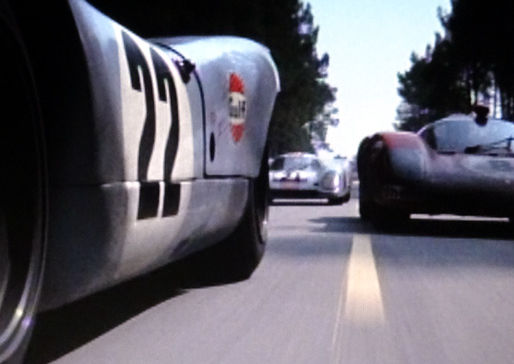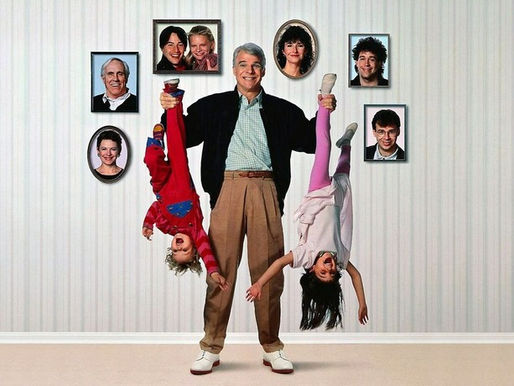top of page
Search
Film Reviews
Reviews of films from 1930's through to 1999.


Dumbo (1941)
Of all the classic features to emerge from Walt Disney’s golden age of animation, Dumbo is perhaps the most paradoxical. It is at once the studio’s shortest feature and one of its most emotionally expansive. Born of necessity—crafted quickly and economically after the financial disappointment of Fantasia—Dumbo was never intended to be a major artistic statement.

Soames Inscker
5 min read


Lady and the Tramp (1955)
Few animated films have captured the essence of romance, charm, and Americana as completely as Walt Disney’s Lady and the Tramp. Released in 1955, this landmark feature was not only a narrative triumph but also a technical one—it was Disney’s first animated film presented in widescreen Cinemascope, giving an unprecedented sense of scale and intimacy to the studio’s storytelling.

Soames Inscker
5 min read


Winnie the Pooh and the Honey Tree (1966)
With Winnie the Pooh and the Honey Tree, Walt Disney introduced American audiences to A.A. Milne’s beloved bear of very little brain, forever altering the way the world would picture the characters of the Hundred Acre Wood. Released on February 4, 1966 as a theatrical short (bundled with the live-action feature The Ugly Dachshund), Honey Tree was Disney’s first foray into adapting Milne’s Winnie-the-Pooh stories, and it would become the foundational text for decades of animat

Soames Inscker
4 min read


101 Dalmations (1961)
When One Hundred and One Dalmatians premiered in 1961, it marked a decisive departure from the lush, romantic fairy-tale aesthetic that had defined Disney’s animated features up to that point.

Soames Inscker
5 min read


Peter Pan (1953)
Few animated films capture the idea of childhood escapism as purely as Walt Disney’s Peter Pan (1953). Adapted from J.M. Barrie’s beloved 1904 play and 1911 novel, the film promised a technicolour flight to Never Land—a realm where children never grow up, pirates and fairies are real, and the problems of the adult world vanish in clouds of imagination.

Soames Inscker
4 min read


Sleeping Beauty (1959)
In 1959, Walt Disney released Sleeping Beauty, his most ambitious and expensive animated feature to date. Nearly a decade in the making and reportedly costing six million dollars—a record for animation at the time—the film was both a technical marvel and a commercial gamble. Upon release, it was met with mixed critical reception and underwhelming box office returns, casting a shadow over the studio’s feature animation department for years.

Soames Inscker
4 min read


Watership Down (1978)
When Watership Down was released in 1978, British audiences were offered something that animation had rarely attempted at the time: a meditative, often brutal, deeply lyrical tale about survival and freedom—told through the eyes of rabbits.

Soames Inscker
5 min read


Fantasia (1940)
When Fantasia premiered in November 1940, it was unlike anything audiences had ever seen—or heard. Equal parts symphony, painting, myth, and fever dream, the film brought together classical music and hand-drawn animation in a visionary cinematic experience. Walt Disney’s third animated feature was also his riskiest, departing entirely from traditional narrative and character-driven storytelling.

Soames Inscker
4 min read


Pinocchio (1940)
When Walt Disney released Pinocchio in 1940, he wasn't simply following up on the unprecedented success of Snow White and the Seven Dwarfs—he was reinventing what animated cinema could be. More than eight decades later, Pinocchio remains a towering achievement: a film of extraordinary technical beauty, moral clarity, and emotional depth. It isn’t just a classic of animation.

Soames Inscker
4 min read


Escape to Victory (1981)
Escape to Victory (also released simply as Victory in the U.S.) is a peculiar and oddly charming fusion of World War II prison escape drama and rousing underdog sports film.

Soames Inscker
4 min read


Le Mans (1971)
Le Mans (1971) is a film unlike many others in the racing genre. Instead of taking a conventional narrative route, it offers a meditative, immersive experience of the famous 24 Hours of Le Mans endurance race held in France.

Soames Inscker
4 min read


See No Evil, Hear No Evil (1989)
See No Evil, Hear No Evil (1989) is the third in a string of collaborative comedies between two of the most beloved comic actors of the 1970s and 1980s: Richard Pryor and Gene Wilder. Following the massive success of Silver Streak (1976) and the solid reception of Stir Crazy (1980), this film attempted to capitalize on their proven chemistry with a high-concept premise—two men, one blind and the other deaf, unwittingly caught in a murder and jewel-smuggling plot.

Soames Inscker
5 min read


Three Amigos! (1986)
Released in 1986 and directed by John Landis, Three Amigos! is a comedic Western that brings together three of the biggest comedy stars of the era—Steve Martin, Chevy Chase, and Martin Short—in a spoof that lovingly pokes fun at silent film-era heroes, Mexican Western tropes, and the inflated egos of Hollywood performers.

Soames Inscker
5 min read


Roxanne (1987)
Roxanne (1987) is a romantic comedy that wears its intelligence—and its heart—on its sleeve. Written by and starring Steve Martin, and directed by Fred Schepisi, the film is a modern reimagining of Edmond Rostand’s 1897 play Cyrano de Bergerac, transporting the story of the eloquent, big-nosed hero into a quirky American mountain town in the 1980s.

Soames Inscker
4 min read


Trains, Planes and Automobiles (1987)
Directed, written, and produced by John Hughes, Planes, Trains and Automobiles (1987) is more than just a holiday road-trip comedy—it’s a poignant character study, a razor-sharp social satire, and one of the most beloved films of the 1980s.

Soames Inscker
4 min read


Parenthood (1989)
Released in 1989, Parenthood is a comedy-drama that manages the rare feat of being both sharply observational and warmly human. Directed by Ron Howard and based on a story developed with screenwriters Lowell Ganz and Babaloo Mandel, the film explores the messy, imperfect, and profoundly emotional world of raising children—and being raised in turn—across multiple generations of one extended family.

Soames Inscker
5 min read


Uncle Buck (1989)
Uncle Buck (1989) is a quintessential John Hughes film: heartfelt, hilarious, and sharply observant of both adult and adolescent growing pains. It’s also a career-defining vehicle for the late, great John Candy, whose turn as the bumbling but lovable title character transformed a potentially one-note comedic premise into a deeply resonant portrait of family, responsibility, and redemption.

Soames Inscker
4 min read


Black Rain (1989)
Black Rain (1989) is a stylish, noir-inflected action thriller directed by Ridley Scott that stands as a moody cultural artifact of late-1980s cinema. Set against the atmospheric backdrop of Osaka, Japan, the film explores themes of cultural clash, moral ambiguity, and personal redemption through the lens of a gritty crime narrative.

Soames Inscker
4 min read


Dead Poets Society (1989)
Dead Poets Society (1989) is a deeply affecting, beautifully crafted coming-of-age drama that has resonated with audiences for decades. Directed by Peter Weir and featuring a career-defining performance by Robin Williams, the film explores themes of individuality, conformity, rebellion, and the transformative power of art—particularly poetry.

Soames Inscker
5 min read


Shirley Valentine (1989)
Shirley Valentine (1989), directed by Lewis Gilbert and based on Willy Russell’s acclaimed stage play, is a poignant, funny, and quietly radical portrait of a woman reclaiming her identity after years of domestic invisibility.

Soames Inscker
4 min read
bottom of page


